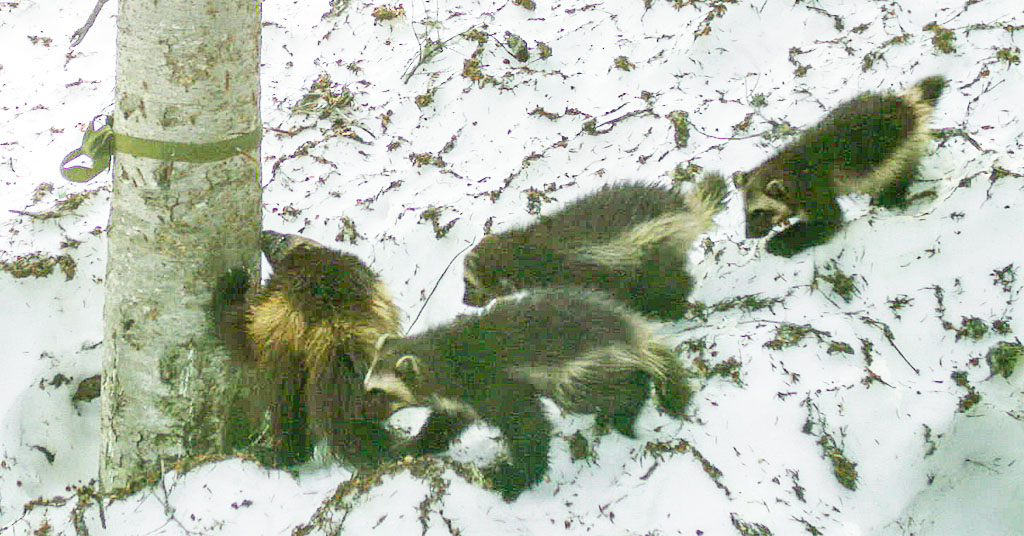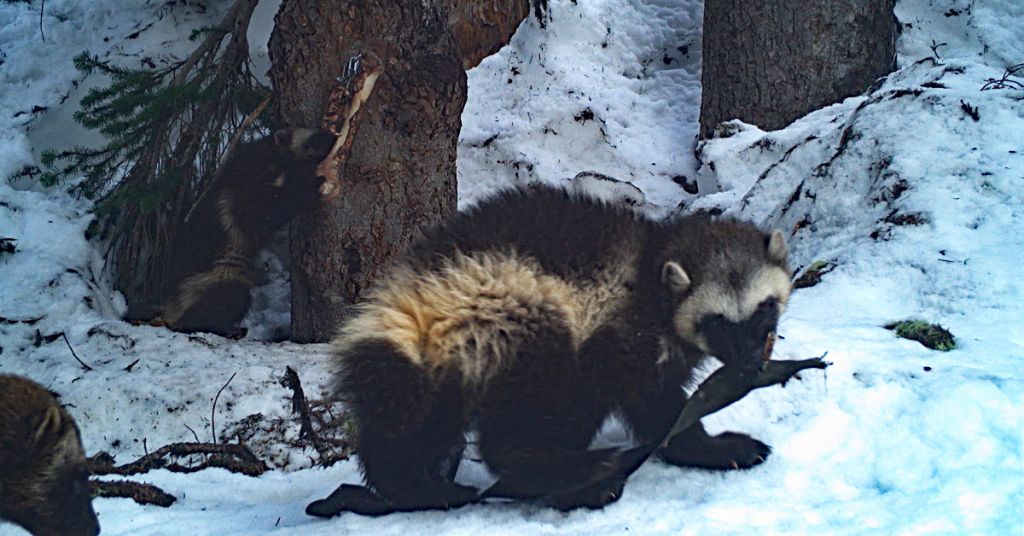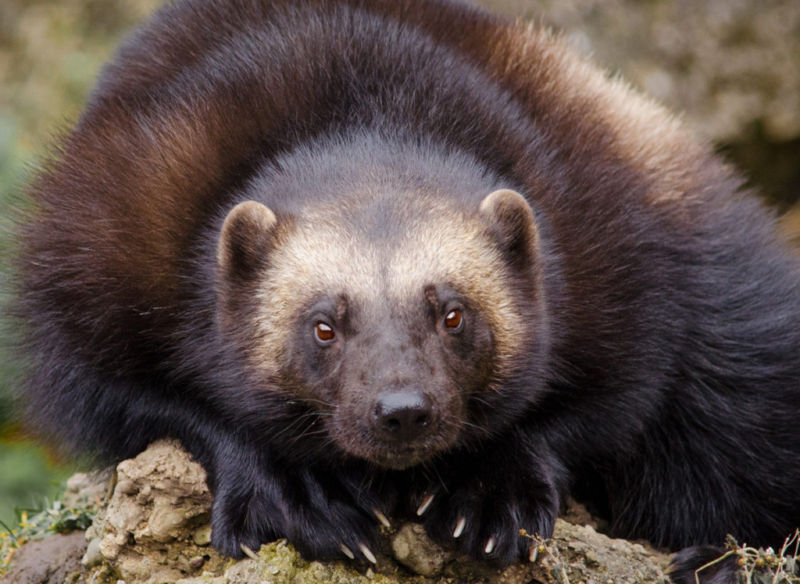It’s the fourth consecutive year for newborns in and around Mount Rainier National Park

Discovery: “Joni” and her three new kits face a daily challenge—finding enough to eat. Photo: Cascades Carnivore Project
By Chuck Thompson. June 12, 2023. More good news for wolverine fans. On June 3, Cascades Carnivore Project announced the discovery of three new baby wolverines (called kits or cubs) in the South Cascades in Washington.
The mother is “Joni,” a wolverine that has now given birth for the past four years.
“Heather Rolph, Cascades Carnivore Project field crew lead, made this rare discovery when checking one of our wolverine integrated monitoring stations that has been running just outside [Mount Rainier National Park] all winter long,” said Jocelyn Akins, the organization’s conservation director, in an email.
Joni was first discovered in 2019 near Paradise at the park and named after Joni Mitchell.
During spring 2020, as landslides and then the global pandemic closed access to the park, Joni—and her mate—more or less had the park to themselves. That same spring, CCC discovered Joni had a litter of kits, marking the return of a wolverine population after a century.
The father of the new triplets is likely a wolverine named “Van.”
“Joni’s territory is within (Van’s) territory and they are often photographed at our stations together,” Akins told Columbia Insight. “We first discovered him near Bumping Lake on the William O. Douglas Wilderness (in the Okanogan-Wenatchee National Forest) in 2017. He is a big, old wolverine. His home range extends from the headwaters of the Little Naches River, almost to Snoqualmie Pass, across the Norse Peak Wilderness, across the entire Mount Rainier National Park and down toward White Pass.”
Despite the ongoing births, wolverines still have it tough. For Joni, finding find food for herself and her kits is a daily challenge, according to Akins.
“We continue to monitor the small and growing South Cascades wolverine population in the hopes of new individuals arriving, possibly from the north, as we work to understand what is needed for the wolverine to regain its foothold in Washington’s Cascades,” said Akins.










Great news that wolverines are coming back. Good ? article Chuck
No guestionmark in my previous post
Fantastic news! Thanks for sharing.
What do they eat? It would be hard to find anything in winter!